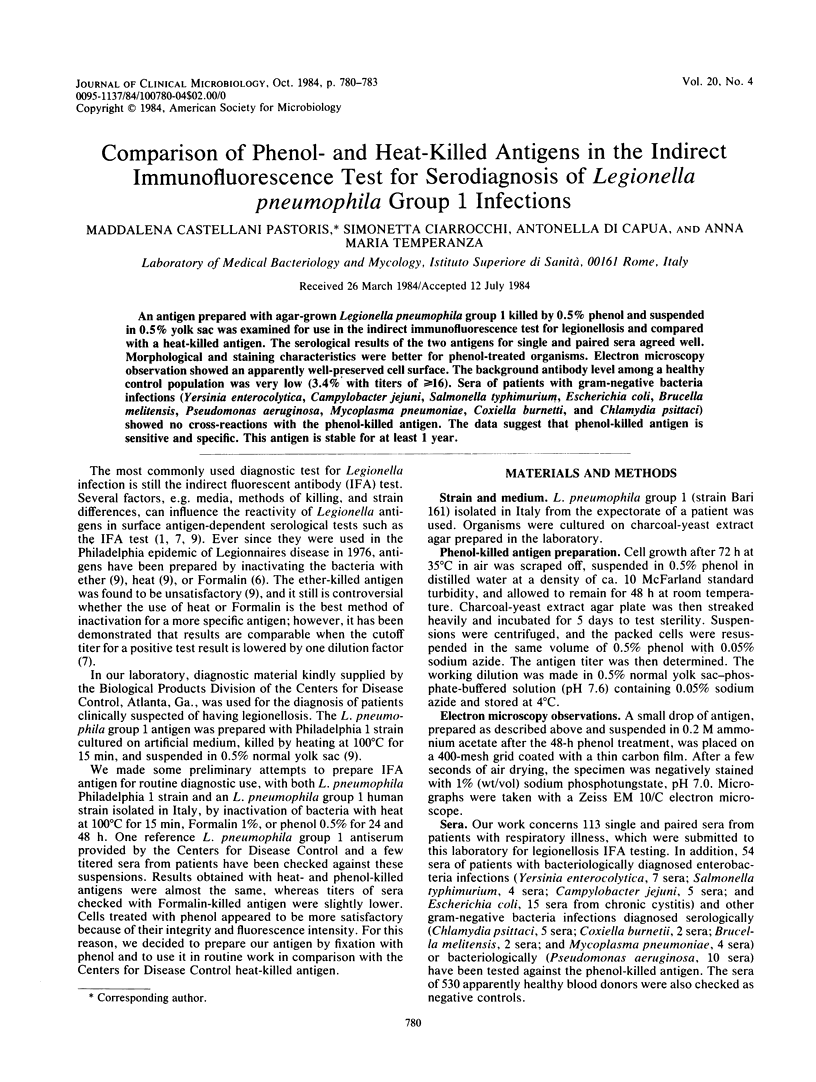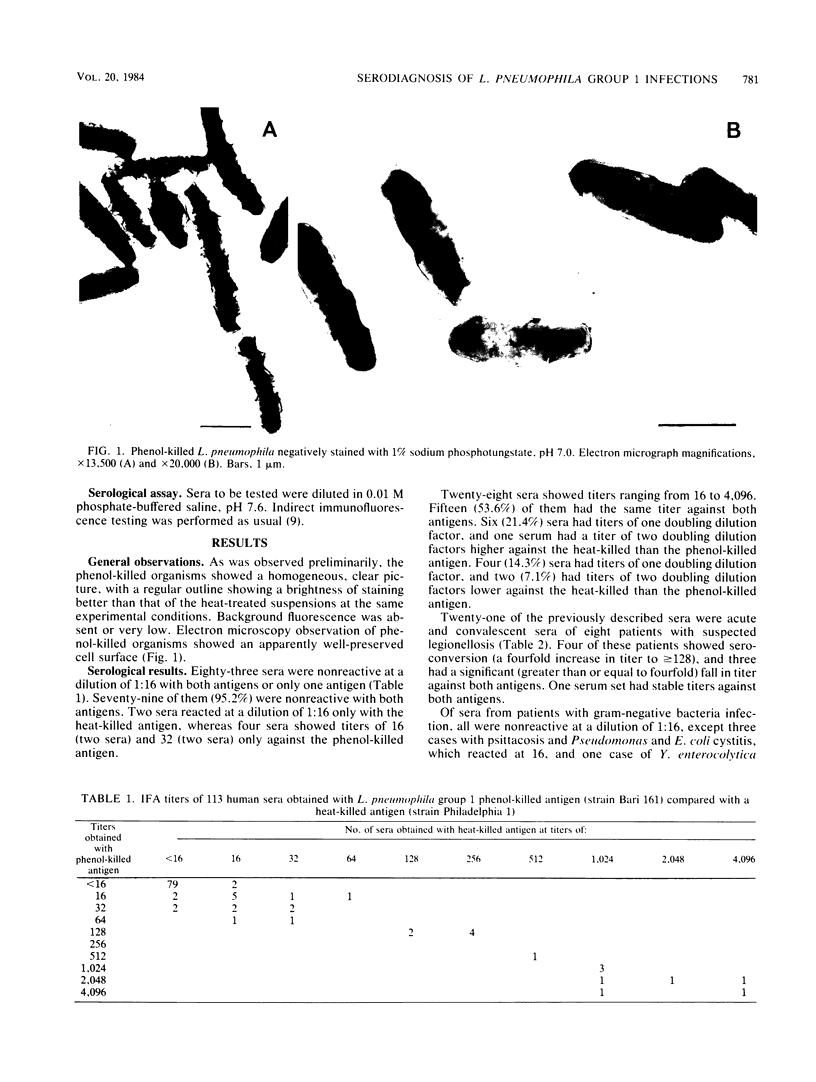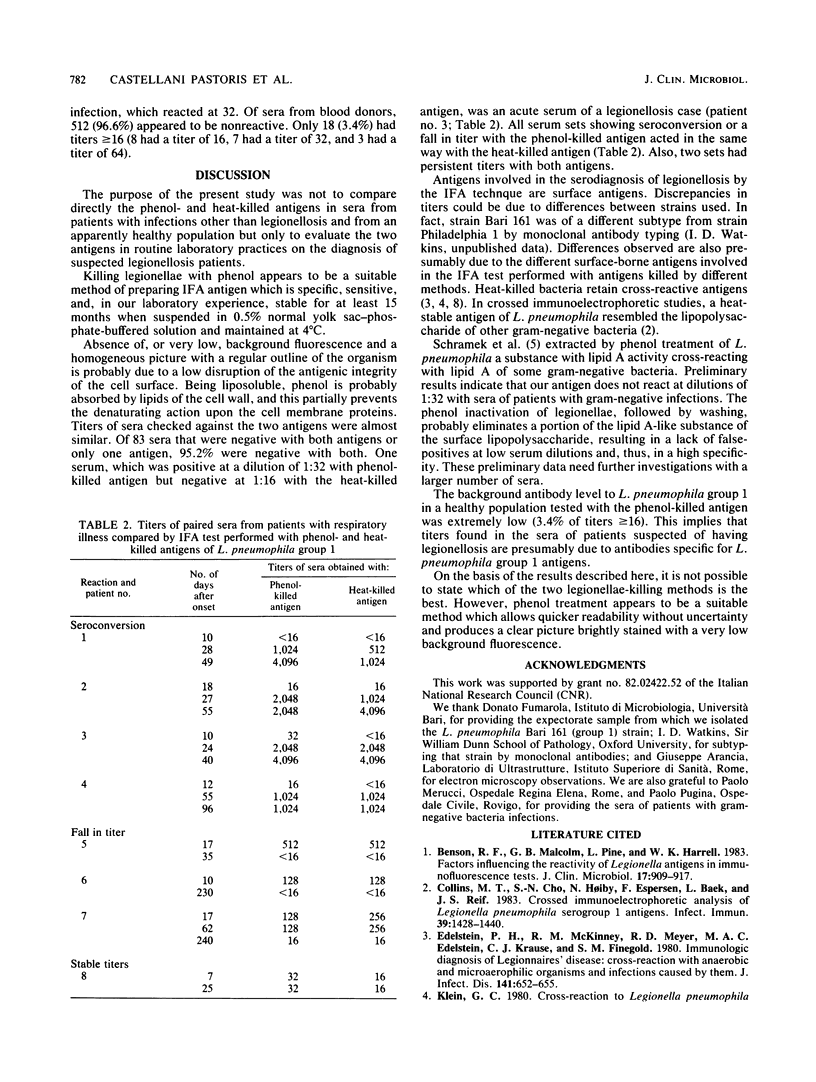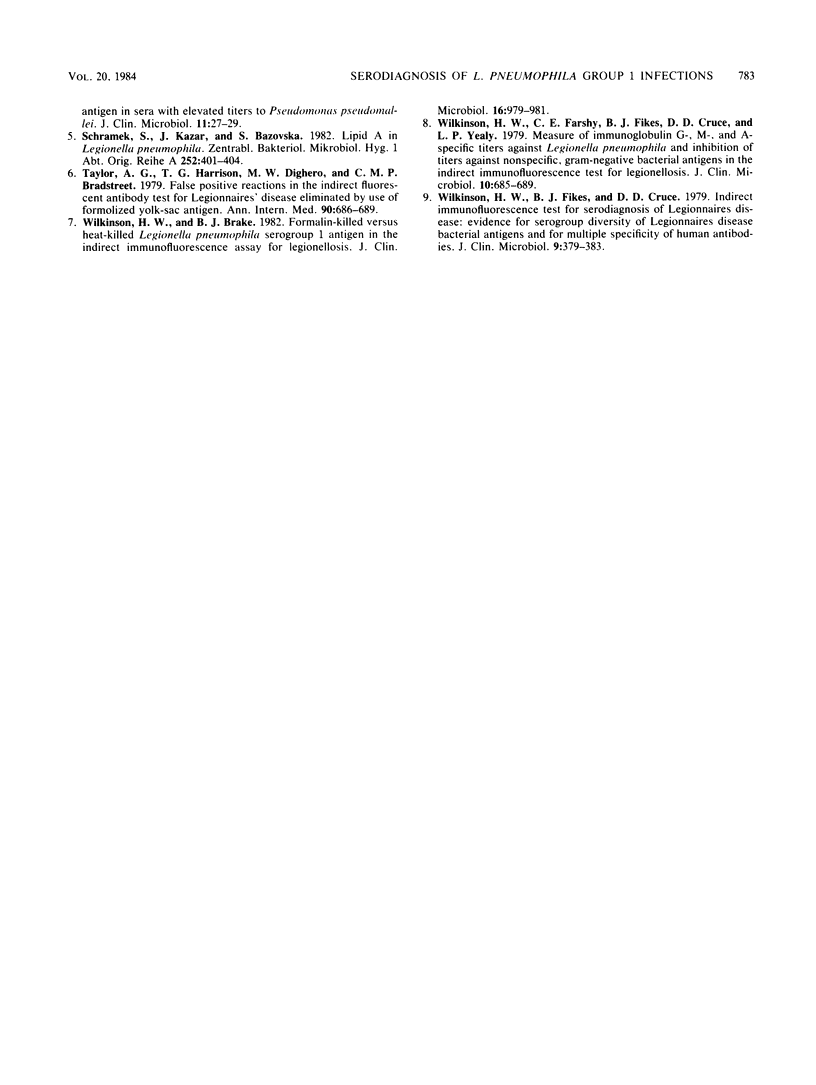Abstract
An antigen prepared with agar-grown Legionella pneumophila group 1 killed by 0.5% phenol and suspended in 0.5% yolk sac was examined for use in the indirect immunofluorescence test for legionellosis and compared with a heat-killed antigen. The serological results of the two antigens for single and paired sera agreed well. Morphological and staining characteristics were better for phenol-treated organisms. Electron microscopy observation showed an apparently well-preserved cell surface. The background antibody level among a healthy control population was very low (3.4% with titers of greater than or equal to 16). Sera of patients with gram-negative bacteria infections (Yersinia enterocolytica, Campylobacter jejuni, Salmonella typhimurium, Escherichia coli, Brucella melitensis, Pseudomonas aeruginosa, Mycoplasma pneumoniae, Coxiella burnetti, and Chlamydia psittaci) showed no cross-reactions with the phenol-killed antigen. The data suggest that phenol-killed antigen is sensitive and specific. This antigen is stable for at least 1 year.
Full text
PDF



Images in this article
Selected References
These references are in PubMed. This may not be the complete list of references from this article.
- Benson R. F., Malcolm G. B., Pine L., Harrell W. K. Factors influencing the reactivity of Legionella antigens in immunofluorescence tests. J Clin Microbiol. 1983 May;17(5):909–917. doi: 10.1128/jcm.17.5.909-917.1983. [DOI] [PMC free article] [PubMed] [Google Scholar]
- Collins M. T., Cho S. N., Høiby N., Espersen F., Baek L., Reif J. S. Crossed immunoelectrophoretic analysis of Legionella pneumophila serogroup 1 antigens. Infect Immun. 1983 Mar;39(3):1428–1440. doi: 10.1128/iai.39.3.1428-1440.1983. [DOI] [PMC free article] [PubMed] [Google Scholar]
- Edelstein P. H., McKinney R. M., Meyer R. D., Edelstein M. A., Krause C. J., Finegold S. M. Immunologic diagnosis of Legionnaires' disease: cross-reactions with anaerobic and microaerophilic organisms and infections caused by them. J Infect Dis. 1980 May;141(5):652–655. doi: 10.1093/infdis/141.5.652. [DOI] [PubMed] [Google Scholar]
- Klein G. C. Cross-reaction to Legionella pneumophila antigen in sera with elevated titers to Pseudomonas pseudomallei. J Clin Microbiol. 1980 Jan;11(1):27–29. doi: 10.1128/jcm.11.1.27-29.1980. [DOI] [PMC free article] [PubMed] [Google Scholar]
- Schramek S., Kazár J., Bazovská S. Lipid A in Legionella pneumophila. Zentralbl Bakteriol Mikrobiol Hyg A. 1982 Jul;252(3):401–404. [PubMed] [Google Scholar]
- Taylor A. G., Harrison T. G., Dighero M. W., Bradstreet C. M. False positive reactions in the indirect fluorescent antibody test for Legionnaires' disease eliminated by use of formolised yolk-sac antigen. Ann Intern Med. 1979 Apr;90(4):686–689. doi: 10.7326/0003-4819-90-4-686. [DOI] [PubMed] [Google Scholar]
- Wilkinson H. W., Brake B. J. Formalin-killed versus heat-killed Legionella pneumophila serogroup 1 antigen in the indirect immunofluorescence assay for legionellosis. J Clin Microbiol. 1982 Nov;16(5):979–981. doi: 10.1128/jcm.16.5.979-981.1982. [DOI] [PMC free article] [PubMed] [Google Scholar]
- Wilkinson H. W., Farshy C. E., Fikes B. J., Cruce D. D., Yealy L. P. Measure of immunoglobulin G-, M-, and A-specific titers against Legionella pneumophila and inhibition of titers against nonspecific, gram-negative bacterial antigens in the indirect immunofluorescence test for legionellosis. J Clin Microbiol. 1979 Nov;10(5):685–689. doi: 10.1128/jcm.10.5.685-689.1979. [DOI] [PMC free article] [PubMed] [Google Scholar]
- Wilkinson H. W., Fikes B. J., Cruce D. D. Indirect immunofluorescence test for serodiagnosis of Legionnaires disease: evidence for serogroup diversity of Legionnaires disease bacterial antigens and for multiple specificity of human antibodies. J Clin Microbiol. 1979 Mar;9(3):379–383. doi: 10.1128/jcm.9.3.379-383.1979. [DOI] [PMC free article] [PubMed] [Google Scholar]



